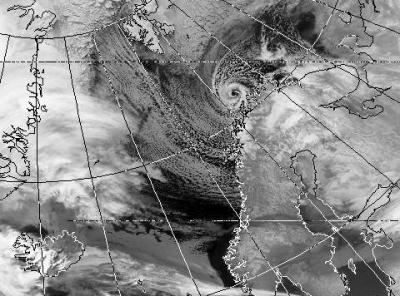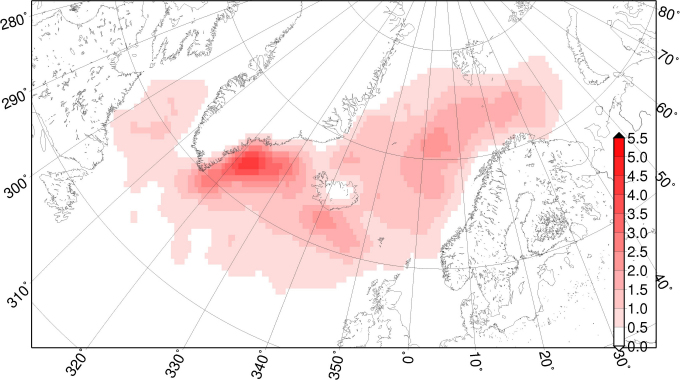On the Trail of Polar Lows
Scientists from the GKSS Research Centre in Geesthacht have developed a mathematical method that enables a reconstruction of the occurrence of small-scale polar storms - so-called polar lows - in the North Atlantic.
This has made it possible to determine, for the first time, the frequency of such polar lows in the past.
Subsequent statistical analysis of data generated for the last 60 years revealed no direct correlation between global warming and the incidence of polar lows.
The results from the Institute for Coastal Research in Geesthacht have now been published in the scientific journal Geophysical Research Letters.
Treacherous winds

Photo: Universitiy of Dundee
Polar lows are small-scale storms that occur in the oceans of the high latitudes and are comparable to a tropical cyclone. The strong winds they produce are rightly feared by seamen. In the course of the last century, North Atlantic polar lows caused 56 shipwrecks with a total of 342 people lost at sea.
Although polar lows do not always produce winds of hurricane force, they are particularly treacherous to shipping because they can develop very suddenly and, on account of their small diameter of only a few hundred kilometres, are very difficult to predict.
Similarly, the lack of meteorological stations in the polar regions further compounds the difficulties of forecasting and documenting these weather systems.
Detecting unrecorded polar lows
In order to determine whether the frequency of polar lows has increased in the North Atlantic in recent decades as a result of climate change, the environmental scientist Matthias Zahn and the climate researcher Hans von Storch from the GKSS Research Centre in Geesthacht examined global atmospheric data for the period from 1948 to 2006 in cooperation with the Meteorological Institute of the University of Hamburg.

Graphic: HZG/ M. tooth
These data are available for areas of around 200 by 200 kilometres. “When you’re dealing with an essentially regional phenomenon such as a polar low, which often measures only a couple of hundred kilometres across, the resolution of global atmospheric data is too low to generate a precise analysis,” explains Matthias Zahn, who is currently working on his doctorate at the University of Hamburg.
However, with the use of the so called “dynamical downscaling”, Zahn has been able to give these global atmospheric data the resolution required for their application to an area of around 50 by 50 kilometres. At the same time, he has developed a mathematical method that makes it possible to detect polar lows in this higher-resolution data.
“Using this method, we were able to determine the frequency of polar lows during periods in the past, when satellite data was not as comprehensive as it is now. In the process, we discovered polar lows that don’t appear in previous meteorological records,” says Zahn.
The subsequent statistical analysis showed that there is no long-term trend in the frequency of polar lows over the last 60 years and that at present there is no direct correlation to global warming.
The mathematical method developed by Zahn will continue to be used to generate statistical information on variable high wind speeds within polar lows and on this basis to develop scenarios elucidating the occurrence of such storms.
Background information
Information on article:
Zahn, M., and H. von Storch (2008), A long-term climatology of North Atlantic polar lows, Geophys. Res. Lett., 35, L22702, doi:10.1029/2008GL035769
Link to article:
Link to article in the „Geophysical Research Letters“The work was conducted under the aegis of EXTROP, a Virtual Institute of the Helmholtz Association.
Contact persons
Phone: +49 (0)40 42838-3531 , +49 (0)4152 87-1801
Phone: +49 (0)4152 87-1648
